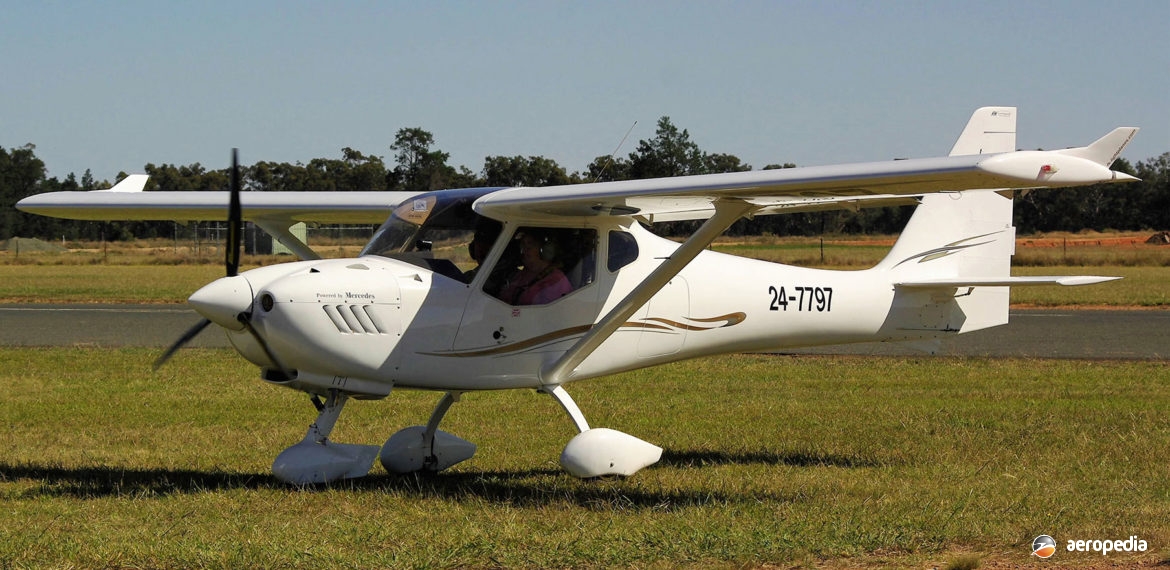Photograph:
FK Lightplanes FK-9 24-7797 (c/n 405) at Temora, NSW in April 2012 (David C Eyre)
Country of origin:
Germany
Description:
Two-seat light training and sport aircraft
Power Plant:
One 80 kw (100 hp) Rotax 912UL-S four-cylinder horizontally-opposed liquid-and-air-cooled engine
Specifications:
- [FK-9 Mk IV]
- Wingspan: 9.04 m (29 ft 9 in)
- Length: 5.94 m (19 ft 5 in)
- Height: 2.4 m (7 ft 9 in)
- Wing area: 10.04 m² (112 sq ft)
- Never exceed speed: 230 km/h (143 mph)
- Cruising speed at 75% power: 193 km/h (120 mph)
- Stalling speed: 63 km/h (39 mph)
- Rate of climb: 457 m/min (1,500 ft/min)
- Take-off roll: 100 m (328 ft)
- Landing roll: 114 m (375 ft)
- Fuel capacity: 61 litres (13.3 Imp gals)
- Range: 805 km (500 miles)
- Empty weight: 288 kg (636 lb)
- Useful load: 279 kg (614 lb)
- Loaded weight: 567 kg (1,250 lb)
History:
The FK Lightplanes FK-9 series was produced in a number of models to meet customer requirements in Germany. The type has been distributed in this region by Silent Wings Aviation. FK Lightplanes has been building light aircraft in Europe for more than 40 years and in recent years built a new facility to continue production. Engines fitted were usually from the Rotax range but the 76 kw (102 hp) Mercedes Ecofly unit was also available. The latter unit was based on the Mercedes SMART engine, which was fuel-injected and turbo-boosted with twin-ignition and has been available in 61 kw (82 hp) and 76 kw (102 hp) variants.
FK Lightplanes had a range of aircraft, these being the FK-9 Mk 4 designed as a high-wing trainer with a Rotax 912UL engine; the FK-9 ELA for private use; the FK-12, a low-cost biplane for aerobatics; and the FK-14B, a low-wing model for private use.
The FK-9 series had a composite fuselage with an integrated tubular steel cage in the cockpit area. Winglets were offered to reduce fuel consumption and improve stalling speed. Full carbon flaps were actuated by a switch in the centre console. A wing folding mechanism was an option for hangarage and trailering. The FK-9 was available in tricycle or tailwheel configuration, and the cockpit was available with analogue instrumentation, or Garmin or Dynon panels.
Early arrivals included 24-8046 (c/n 18899), 24-8041 (c/n 09-05-447) and 24-8299 (c/n FK9-457) registered under Recreational Aviation Australia (RAA) Regulations.

